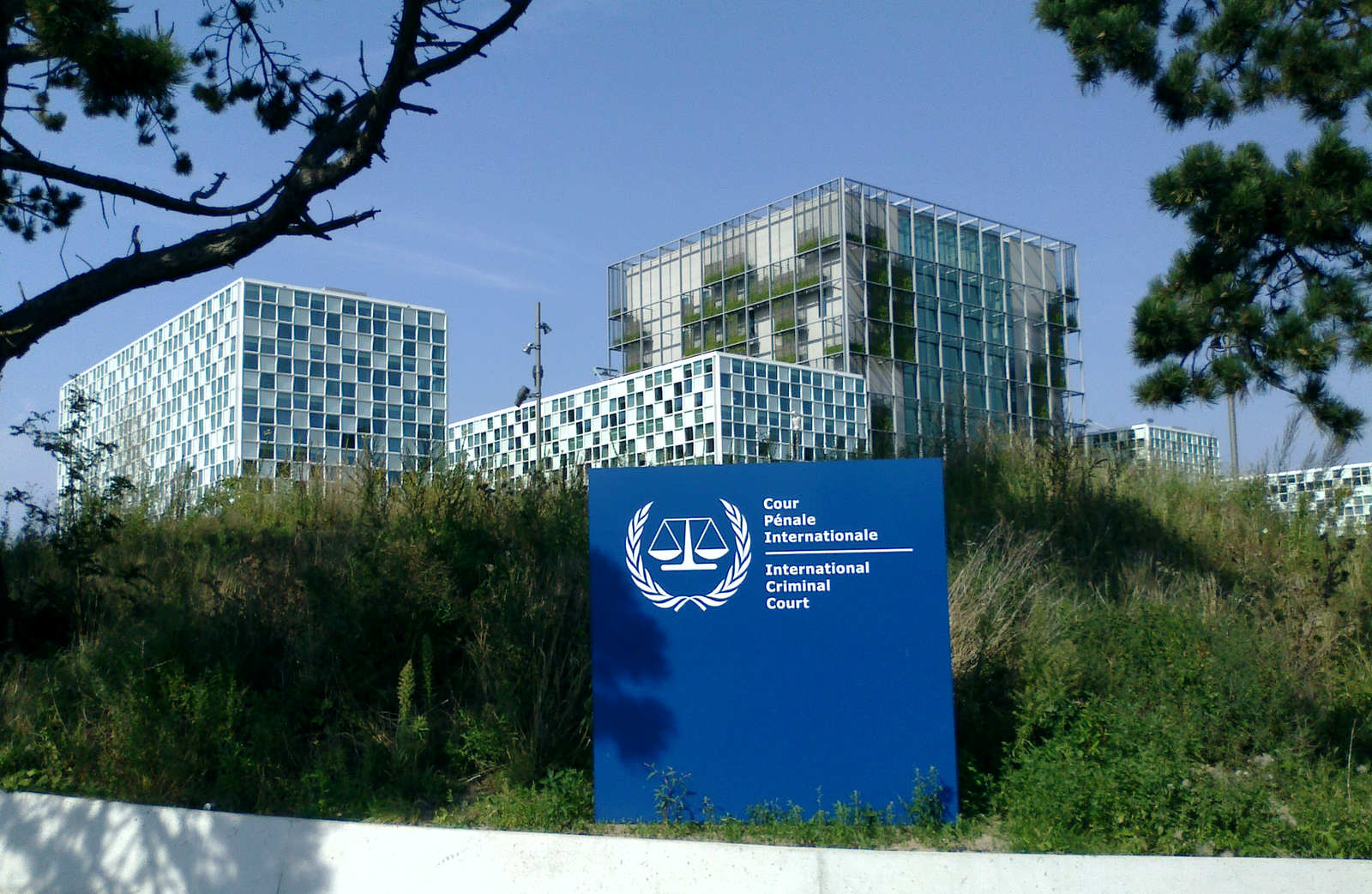The Inner Workings of the International Criminal Court

Published by The Lawfare Institute
in Cooperation With

Yvonne McDermott’s “Proving International Crimes” is an extraordinarily useful resource for practitioners, commentators, and academics in the field of international criminal law, as well as for government officials interested in the inner workings of the international tribunals. Although much of the attention on the International Criminal Court (ICC) these days has focused on its high-profile (but largely unexecuted) arrest warrants, sanctions imposed on court personnel by the United States, and misconduct allegations against the chief prosecutor, this book concentrates on (what should be) the core of the court’s work: proving crimes within its jurisdiction—namely, war crimes, crimes against humanity, genocide, and aggression. McDermott’s central concern within this endeavor is evidence, particularly its admissibility in trials and its evaluation by the judges.
McDermott’s book is organized in eight chapters concerning major topics in evidence at the ICC, including burdens of proof, admission of evidence, evaluating and weighing evidence, and proof on appeal (a separate topic at the ICC because its rules are more permissive about admitting evidence in the appeals process).
McDermott’s focus on proof is timely. The ICC was established by the Rome Statute in 1998 and became operational in 2002. It is a treaty court with 125 states as members, not including the United States, Russia, or China. As the ICC approaches 25 years in operation, it is seeking to function with greater rigor with the understanding that it will survive only if it can show concrete successes. Following a number of early stumbles resulting in dismissals of some charges or acquittals at trial, the Office of the Prosecutor in 2012 committed itself to bringing cases with stronger evidentiary foundations. Over the past decade, the judges have made efforts to harmonize and rationalize evidentiary practices. McDermott’s book offers an opportunity to assess these efforts by prosecutors and judges.
McDermott provides a comprehensive guide to how evidence is submitted and evaluated at the court, as well as a thoughtful assessment of the court’s performance. Her research is extremely thorough, in topics as well as sources (the footnotes alone are a valuable resource, citing all significant evidence decisions at the ICC as well as relevant books and articles). The analysis is clear and logical. While McDermott focuses on the ICC, as it is the only permanent international criminal court, she places its work in context by citing to practices at ad hoc and time-limited tribunals such as the International Criminal Tribunal for the former Yugoslavia, the International Criminal Tribunal for Rwanda, and the Kosovo Specialist Chambers.
To evaluate the law and practice of proving crimes at the ICC, McDermott relies on two normative principles: “rectitude of decision [aka, truth] and the highest standards of fairness.” The emphasis on truth is salutary, as we live in a time when the notion of a truth—both generally and, in the context of criminal adjudication, specifically—can sometimes find itself under siege (and not just from certain political leaders). Viewed by some as invented, nonexistent, contingent, or simply quaint, the truth sometimes finds itself downgraded or set aside altogether as a goal. Not so for McDermott, who offers a robust argument for prioritizing truth in gauging evidentiary rules. While the challenges of proof can make the truth difficult to establish, it nonetheless exists: The accused committed the crimes, or he did not (and I note, it is almost always a “he” at the ICC).
Moreover, the Rome Statute imposes lengthy and complex pretrial and trial processes; maintaining the truth as a guiding principle in the interpretation and application of these procedures can help ensure that they do not become impediments to the core work of the institution. Focusing on uncovering the truth as the goal of trials encourages practical approaches to the rules and helps curtail any reliance on them by one or more of the parties to create delay or confusion, As McDermott points out, the criminal adjudication process, and any notions of justice or injustice, make no sense if the notion of a truth is abandoned.
McDermott’s second guiding principle, fairness, is particularly important at the ICC given the stakes of the project. The cases tried at the ICC are critically important not only to the victims and the accused but also to the communities in which the crimes occurred, and often to the broader international community as well.
By emphasizing truth and fairness, McDermott downgrades the importance of a third ideal that may be used to assess processes of proof, namely, efficiency. To be fair, McDermott has built some consideration of efficiency into her principle of fairness—she notes that the accused has a “right to trial without undue delay”—and it appears as an important value throughout her analysis. But while efficiency will often have to give way to truth and fairness, it nonetheless merits a place as a fundamental guiding principle. The accused is not alone in having an interest in expeditious proceedings; so do the prosecution, victims, affected communities, and the states supporting the court.
In fact, aside from results, efficiency is probably the metric that counts the most to outside observers. And on this measure, the ICC has not scored particularly high. Since its establishment more than two decades ago, the ICC has completed only eight trials (and has one ongoing). Each of these cases required at least two years of pretrial proceedings followed by three to four years of trial. The Independent Expert Report in 2020 identified the length of pretrial and trial proceedings as a significant problem, and many commentators have criticized the court’s lumbering pace. Efficiency will always pose a stubborn challenge at the ICC because of the complexity of the cases, the court’s physical and typically temporal remove from the crimes, the procedures imposed by the Rome Statute, and translation issues. But the difficulty of achieving efficiencies only makes it all the more necessary that the judges and parties strive to achieve them where they can.
Turning to the rules of admission and evaluation of evidence, McDermott correctly identifies inconsistent practices among the judges. “[T]wo Chambers of the same Court, running trials concurrently under the same roof,” she observes, “can do so with almost unrecognizable approaches to the admission of evidence.” The broad discretion the Rome Statute affords judges with respect to the admission and assessment of evidence is both a bug and a feature of the system. On the one hand, what McDermott correctly characterizes as “significant fragmentation in practice” can certainly be frustrating for practitioners (I speak from experience) and dizzying for commentators. (At the same time, it is doubtful that victims, affected communities, or states pay such close attention to inconsistencies in how judges manage the evidence, focusing instead on results.)
On the other hand, as McDermott notes, the discretion permitted by the rules allows for useful experimentation. International criminal prosecutions present challenges different from even the most complex cases tried in domestic systems. Where the Rome Statute allows for discretion, the judges may try out different approaches. What might make sense in theory, or what might have worked in a particular domestic system, may not be suited to the international system or may result in unintended consequences. But McDermott is right that if experience then shows that certain practices are superior, according to agreed metrics, then they should be adopted across all chambers, either through a practice manual adopted by the judges or through amendments to the rules.
In this vein, McDermott makes a strong case for the harmonization of certain practices at the ICC in both the admission and evaluation of evidence. But here she is swimming against the tide, as the judges have trended against the solutions proposed by McDermott. Why the disaccord? McDermott suggests that either the judges have been too influenced by their national practices or they have failed to weigh properly the benefits and costs of the competing approaches. That may be part of it. I think the answer might also lie in the value that the judges place on efficiency whenever they can find it. They may have given more weight to this principle in adopting certain approaches over others.
With respect to the admission of evidence, McDermott explains that the judges at the ICC have followed either “an item-by-item evaluation of admissibility and relevance approach,” whereby they rule on the admissibility and relevance of evidence as it is offered by the parties, or a “submission” approach, whereby admissibility determinations are deferred until the end of trial when the chamber is deliberating its judgment. McDermott quotes from a trial chamber explaining that “[t]he Chamber will consider the relevance, probative value and potential prejudice of each item of evidence submitted at that time, though it may not necessarily discuss these aspects for every item submitted in the final judgment.”
McDermott offers strong arguments in favor of the item-by-item admissibility approach, noting that it provides greater clarity to the parties (in particular, the accused), helps develop the law on admission of evidence, and “prevent[s] the record from being flooded with irrelevant material or evidence,” which has efficiency benefits. Yet, as McDermott acknowledges, the judges have gone the other way; in an effort to bring some harmonization to the fragmented approaches at the court, the judges have adopted certain policies to achieve consistency, including one embracing the submission approach. Why? It may be that the item-by-item approach allows for some efficiencies because parties can better gauge what to offer into evidence when they know what has been admitted already. But since the parties do not necessarily know what weight will be given to the evidence, they remain incentivized to try to admit as much evidence as they can. In fact, the efficiency argument likely pushes strongly in favor of the submission approach. Even the smallest cases at the ICC feature numerous witnesses and thousands of exhibits. Just last month, the court handed down its judgment in the prosecution of Alfred Yekatom and Patrice-Edouard Ngaïssona, the head and organizer/financier, respectively, of the Anti-Balaka movement in the Central African Republic, for war crimes and crimes against humanity over a six-month period spanning 2013 and 2014. The trial, which lasted more than four years, heard from 174 witnesses and had admitted into evidence 19,590 exhibits. The judges are no doubt concerned that given the scale of these cases, trying to rule on the admissibility and relevance of each piece or batch of evidence as it comes in would be unworkable, particularly since the court does not have a strong tradition of efficient oral argument or oral decisions in court and with respect to certain disputes the presiding judge would likely require consultation with the other two judges on the panel. At the end of the trial, it is much clearer what pieces of evidence are significant, and the judges can focus on the admissibility of those during their deliberations.
It is a similar story with respect to the evaluation of evidence by the judges. Here, McDermott draws on important prior work she has done showing how tools derived from argumentation theory and decision science could improve both the reasoning underpinning judgments and the explication of that reasoning in the written judgments. She convincingly shows that behind the current debate at the ICC about whether evidence should be evaluated “holistically” or piece-by-piece lie consequential questions about how the decisions are reasoned and in what detail they are explained. To the end of facilitating a logical evaluation of the evidence, McDermott advocates use of “in-depth analysis charts,” also known as IDACs in the argot of the ICC, whereby the parties diagram the evidence by matching each piece to an element(s) of the offenses charged.
But here again, the judges have moved the other way, going so far as to adopt a rule in the ICC Chambers Practice Manual that “[n]o submission of any ‘in-depth analysis chart’, or similia, of the evidence disclosed can be imposed on either party,” which means that they will not be used because no party would undertake to prepare an IDAC voluntarily. Why did the judges rule against IDACs? Again, I think the answer lies in efficiency. Practice showed that because of the scale of the cases at the ICC, preparing IDACs consumed months and months of additional time as well as significant resources. And in the end, the charts were not particularly useful because parties in litigation are incentivized to preserve all options and so they tended to link all their evidence to all the elements, resulting in volumes and volumes of charts that few ever consulted. In one case (Ongwen), both the prosecution and the defense told the court that “in-depth analysis charts [would] be of little use in the present case.” Even if the charts provided some value in organizing and presenting the evidence, the judges seemed to decide that the payoff did not justify the extra months required.
While it seems that efficiency concerns have pushed the judges away from McDermott’s specific proposals, those same judges, along with practitioners appearing before the court, would nonetheless do well to read her book. Even if the judges stay on their current course, as I expect they will, there is much to learn from McDermott’s thoughtful and cogent analysis. With respect to the admissibility of evidence, the judges should consider identifying significant pieces or categories of evidence and giving direction to the parties on their admissibility and weight. This would not represent a full embrace of the item-by-item admissibility approach, but it would nonetheless accomplish some of what McDermott advocates and allow the parties to better plan how they present their cases. With respect to the evaluation of evidence, McDermott’s approach could assist the parties and judges to organize their thinking around key, narrow disputes in the evidence. The approach takes some time to grasp, but it could be a powerful tool to think about how significant pieces of evidence fit together (or don’t). Incorporating this approach into trainings at the court could improve both the parties’ arguments and the judges’ decisions. In sum, while McDermott’s proposals will not likely be adopted wholesale, they contain important ideas that could improve the work of the ICC.

.jpg?sfvrsn=a496644e_3)



